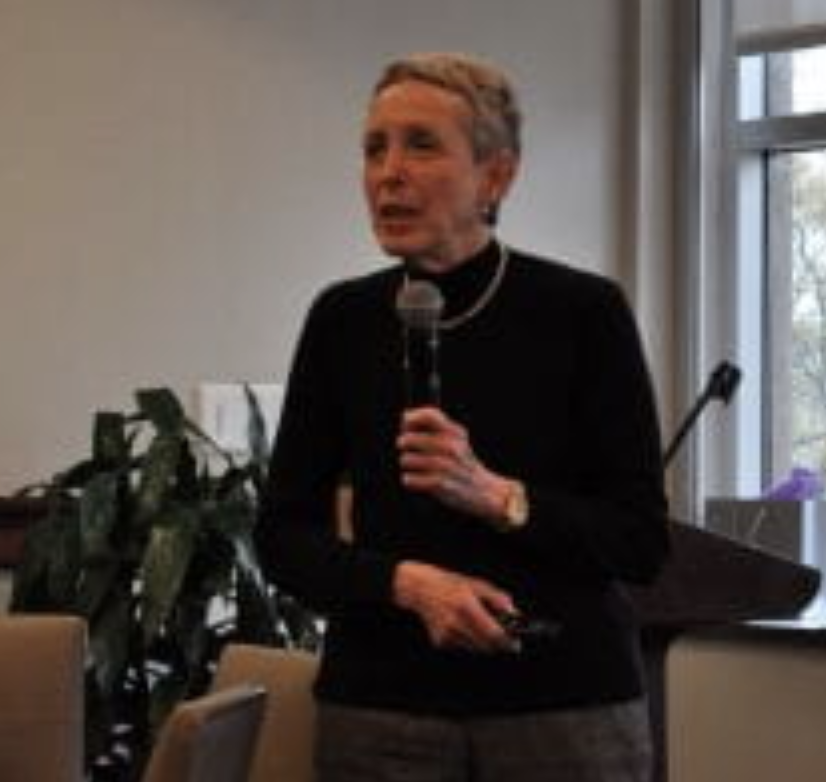Core Colloquium Highlights Research Impact of Shared Facilities
 “It’s too exciting to walk away now,” said Susan Weintraub, at the beginning of her keynote lecture before a room full of Northwestern core facility scientists.
“It’s too exciting to walk away now,” said Susan Weintraub, at the beginning of her keynote lecture before a room full of Northwestern core facility scientists.
Weintraub, who has served for the past 40 years as director of the mass spectrometry core at the University of Texas Health Science Center at San Antonio, was in Chicago on October 31 as the honored guest at Northwestern’s fourth annual Core Facilities Colloquium. The professor of biochemistry and structural biology at UT Health San Antonio was recently named a fellow of the American Association for the Advancement of Science for her longstanding contributions to pathbreaking discovery.
“Dr. Weintraub shows us what a successful career in cores can look like,” said Phil Hockberger, associate vice president for research, in introducing her. “Having contributed to more than 170 research publications, Dr. Weintraub illustrates the character and credibility that comes with allowing the broader scientific community access to the work you are doing.”
After completing her PhD at the UT Health Science Center in 1979 — the same year she began directing the mass spectrometry core — Weintraub joined the faculty there, steadily advancing before being promoted to the rank of professor in 1995. She refers to the recent development of data-independent acquisition as the most exciting thing to come to the world of mass spectrometry in the past 20 years, and a big reason for her not wanting to retire.
Opening this year’s Colloquium, the first ever held in Chicago, was Interim Vice President for Research Milan Mrksich, who celebrated Weintraub’s career and thanked her for coming to campus as the University commemorates 150 years of Women, a yearlong initiative honoring Northwestern’s long history of female undergraduate enrollment.
Mrksich also thanked core facility staff for their scientific rigor in operating a suite of equipment that demands unique expertise to run complicated and often delicate experiments.
“You truly make a difference in research discovery every day,” Mrksich told the audience. Since 2011, Mrksich has been a Northwestern faculty member in the Biomedical Engineering, Chemistry, and Cell & Developmental Biology Departments. He has maintained laboratories on both campuses and said he has relied on more than a dozen core facilities over the past decade. “Technology can enable the most exciting science, but new tools are expensive to buy and can be complicated to use. That’s why core facilities are such a critical asset to researchers, myself included.”
Last fiscal year, five new Northwestern cores came online in the fields of solar research, development biology, advanced manufacturing, nanotechnology, and kidney research.
“All of our cores are constantly reinventing themselves based on the needs of the faculty,” said Andy Ott, director of core facilities. “In providing feedback to cores, we place more emphasis on faculty governance, piloting new capabilities, grant writing, and user outreach than we do on finances. This has resulted in a high level of faculty engagement and well-written proposals for new equipment.”
During his annual “State of Cores” talk, Ott highlighted the University’s five new National Institutes of Health S10 instrumentation grants, as well a major grant from the Howard Hughes Medical Institute and the National Science Foundation Major Research Instrumentation program. New instrumentation has allowed numerous core facilities to better integrate with the more than 40 University Research Institutes and Centers at Northwestern.
“These connections ensure a tight link between the goals of our most ambitious projects with the infrastructure needed to support research at the University,” he said. “We’ve also worked hard to ensure that cores have robust systems of rigor and reproducibility. This has become a major focus for funding agencies and we’ve provided faculty with a competitive advantage as we publicize the systems we adopt.”
Northwestern has become a leader in developing its core facilities as an integral part of the University’s research ecosystem. In addition to exceptional instrumentation, core facility scientists bring PhD-level expertise to support investigators’ discoveries. This talent has been cultivated by the University’s efforts to help professionalize the field, says Hockberger: “Cores offer an exciting career opportunity for scientists who are looking to make a difference.”
Core Facilities Recognized With Service Excellence Awards
The Northwestern Core Facilities Administration office recently announced its ninth-annual Core Facilities Service Excellence Awards. Selection of award recipients was based upon information provided in 2019 annual reports as well as other operational information during the past year.
The awards serve to recognize staff within cores that broadly excel in governance, resource management, innovation, and outreach. Award-winner cores are the:
- Analytical bioNanoTechnology Equipment Core (ANTEC)
- Biological Imaging Facility
- Biostatistics Collaboration Center
- Center for Advanced Microscopy
- Center for Advanced Molecular Imaging
- Center for Translational Imaging
- CTC Microsurgery Recharge
- Center for Molecular Innovation and Drug Discovery
- Developmental Therapeutics Center
- DND-CAT
- Flow Cytometry
- High Throughput Analysis Lab
- Integrated Molecular Education and Research Center
- Keck Biophysics Facility
- LS-CAT
- Mouse Histology and Phenotyping Laboratory
- NUANCE
- NUSeq Core
- Pathology Core Facility
- Peptide Synthesis Core
- Proteomics
- Quantitative Bio-element Imaging Center
- Reactor Engineering and Catalyst Testing (REACT) Core
- SDRC Keratinocyte Core